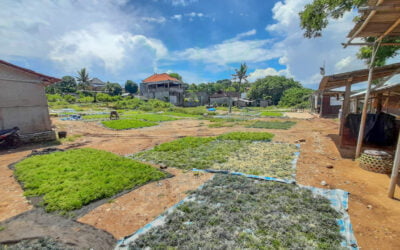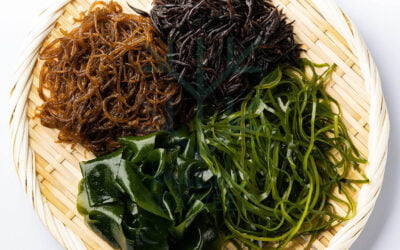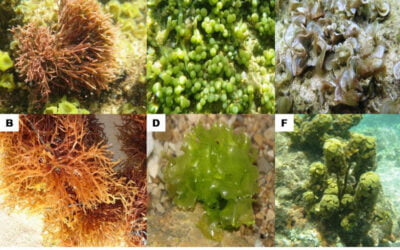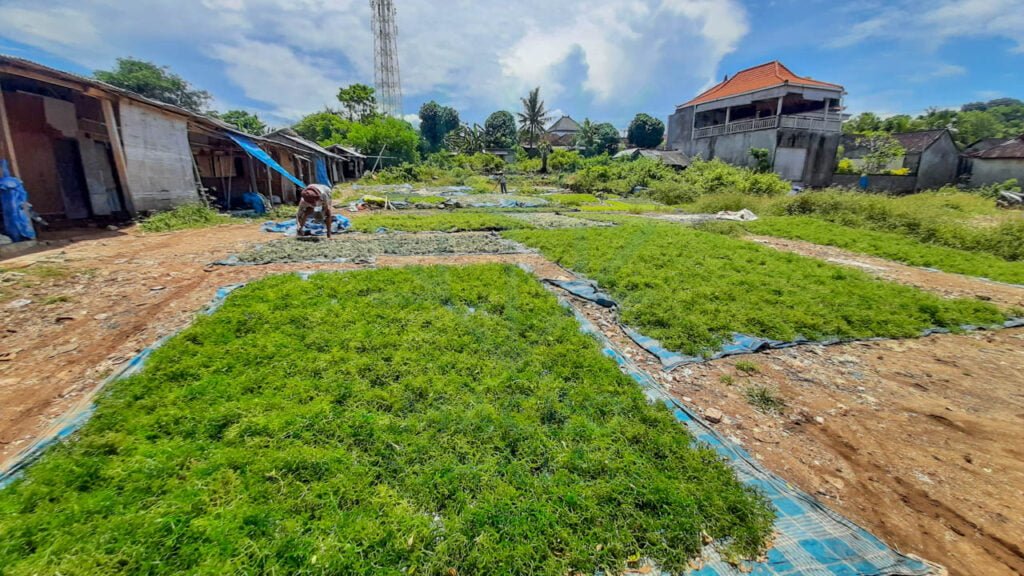Ulva Lactuca, commonly known as sea lettuce, is a type of green seaweed that is found in marine environments around the world, including the waters surrounding Indonesia. It has a long history of use in traditional medicine and as a food source in many cultures, including in Indonesia where it has been consumed for centuries.
Table of Contents
Over time, Ulva Lactuca has become recognized as a valuable commodity for its diverse range of applications. Today, Indonesia is one of the largest producers of Ulva Lactuca, with the majority of the harvest coming from the coastal areas of the country.
Industrial Use of Ulva Lactuca
Ulva Lactuca has a variety of industrial uses, making it a valuable seaweed in the global market. One of the most promising applications of Ulva Lactuca is in the production of bioplastic or degradable plastic. Bioplastics are made from renewable sources, such as seaweed, and are biodegradable, making them a more sustainable alternative to traditional plastics.
Ulva Lactuca is an ideal source of raw material for bioplastic production due to its high cellulose content. Cellulose is a key component of plant cell walls and can be broken down to produce a range of bioplastics, including polylactic acid (PLA) and polyhydroxyalkanoates (PHAs).
Aside from its potential in bioplastic production, Ulva Lactuca is also used as animal feed. The seaweed is rich in nutrients, including protein, fiber, and minerals, making it a valuable supplement to animal diets. It is particularly popular in the aquaculture industry, where it is used as feed for fish, shrimp, and other marine organisms including livestock feeds.
International Market for Ulva Lactuca
The international market for dried seaweed Ulva Lactuca is growing rapidly, driven by increasing demand for sustainable and environmentally friendly products. Indonesian producers are at the forefront of the industry, producing high-quality Ulva Lactuca for use in a range of industrial applications.
One of the factors driving the popularity of Indonesian Ulva Lactuca is the quality of the product. Indonesian producers use a range of cultivation and processing techniques to ensure that their seaweed is of the highest quality, with a high cellulose content and minimal impurities.
Another factor is the competitive pricing of Indonesian Ulva Lactuca. Compared to other sources of raw material for bioplastics, such as corn starch or sugarcane, Ulva Lactuca is more affordable and easier to produce, making it an attractive option for manufacturers looking to keep their costs down.
In Conclusion
Visit Ulva product page for more information about our seaweed products. Ulva Lactuca is a versatile and valuable species of seaweed that has a long and rich history in Indonesia. Its potential as a source of bioplastic or degradable plastic and as animal feed makes it a valuable commodity in the global market, with Indonesian producers leading the way in producing high-quality Ulva Lactuca for use in a range of industrial applications. As demand for sustainable and environmentally friendly products continues to grow, it seems likely that the market for Ulva Lactuca will only continue to expand.






